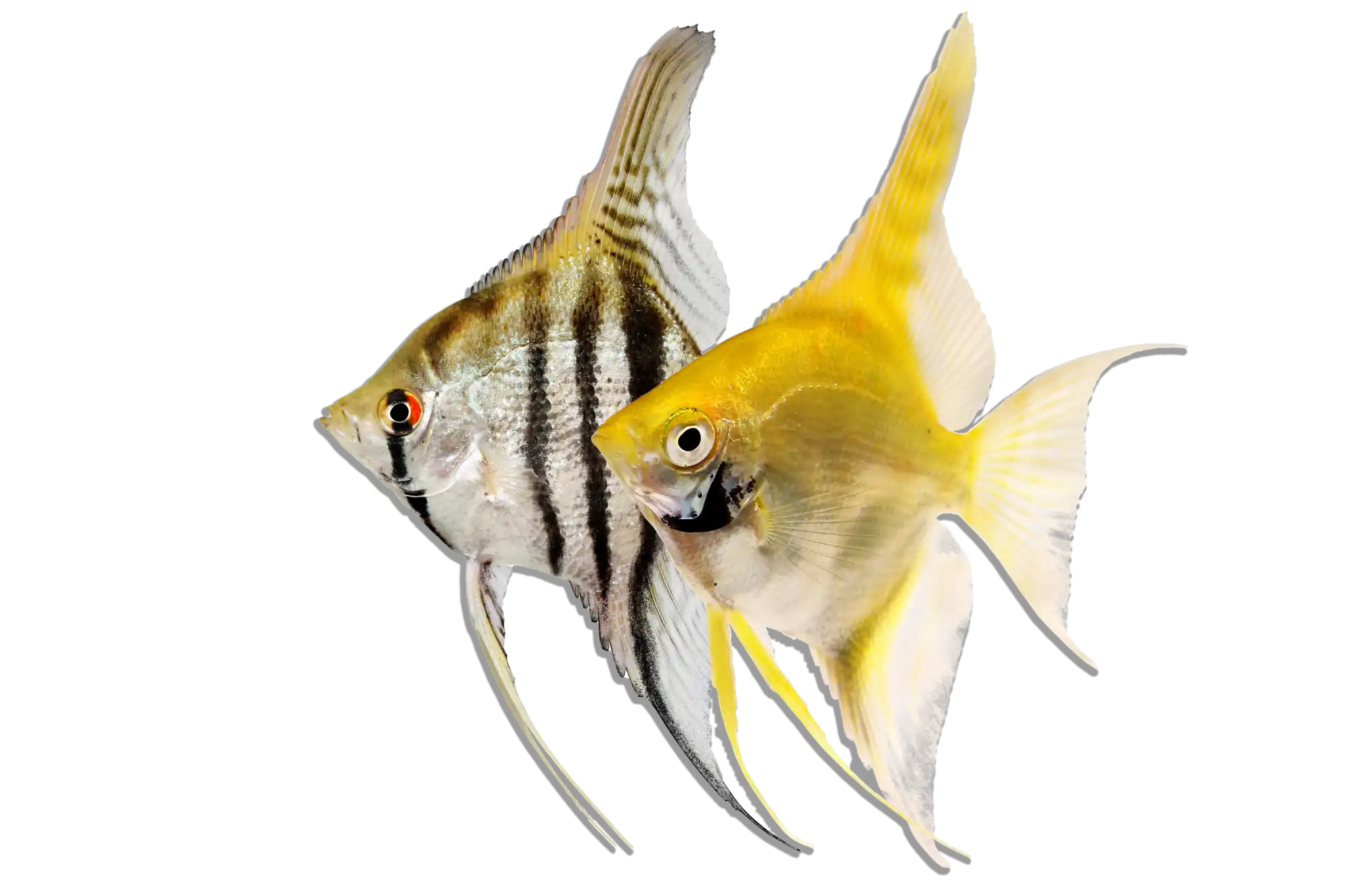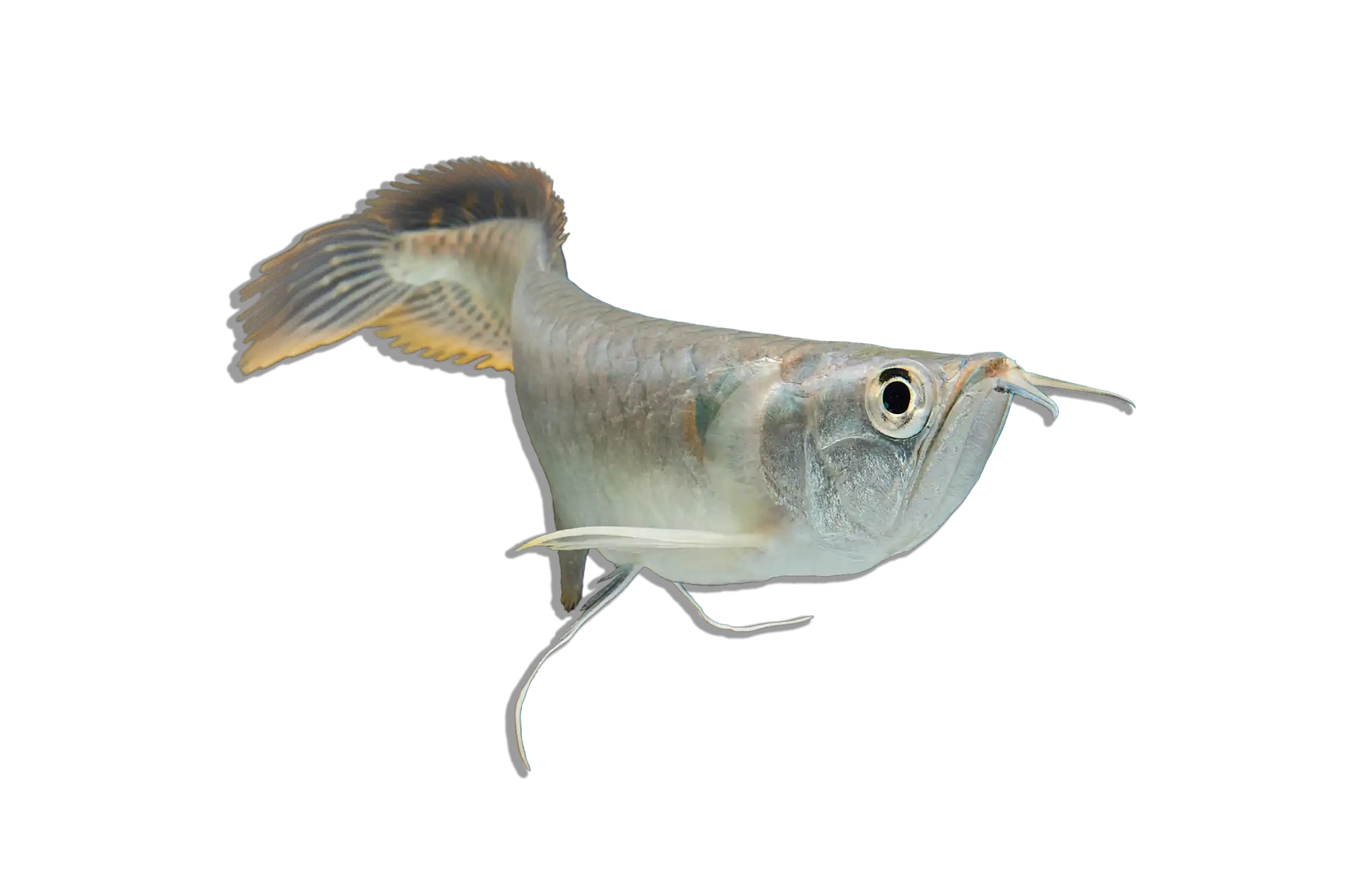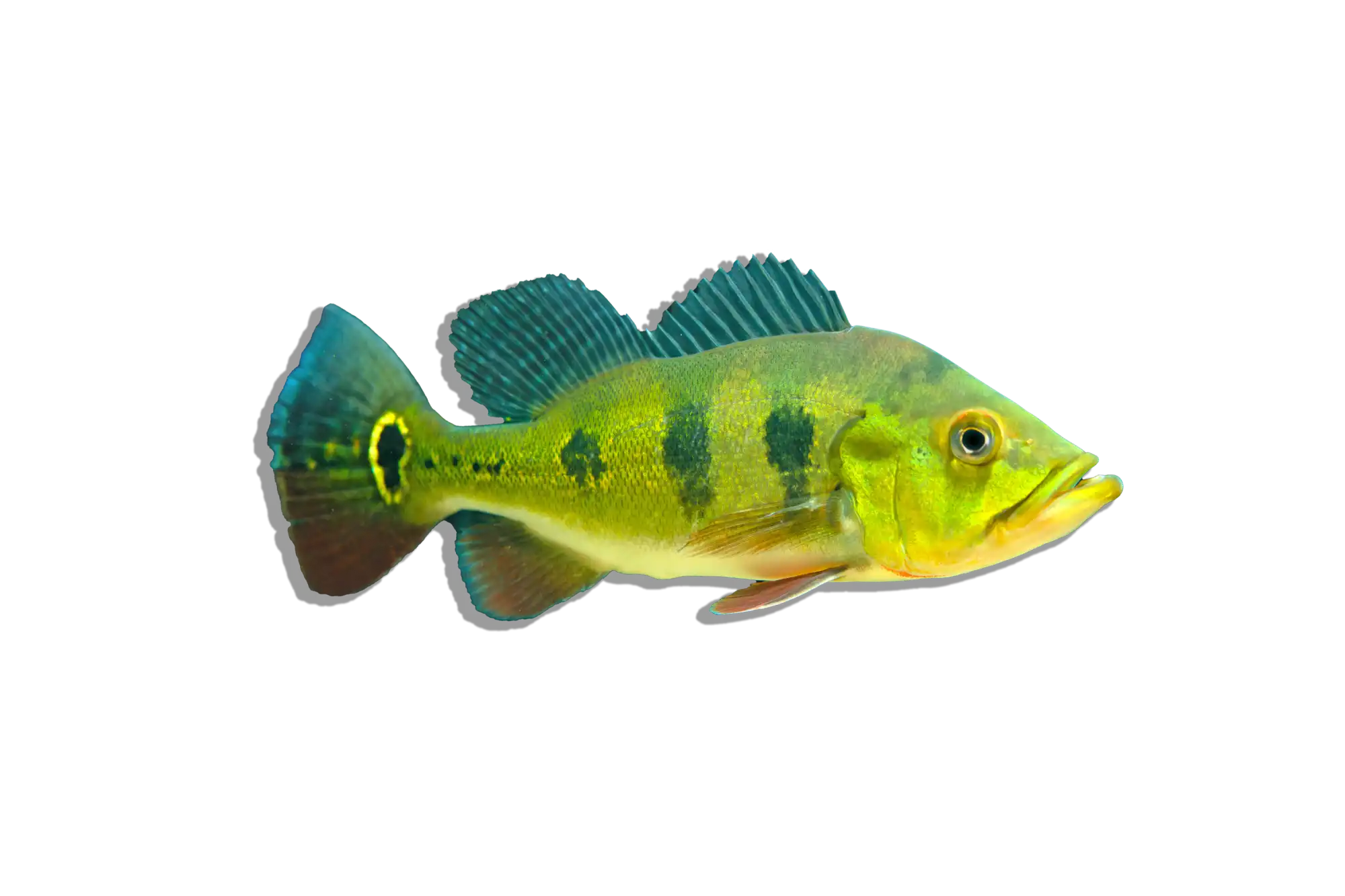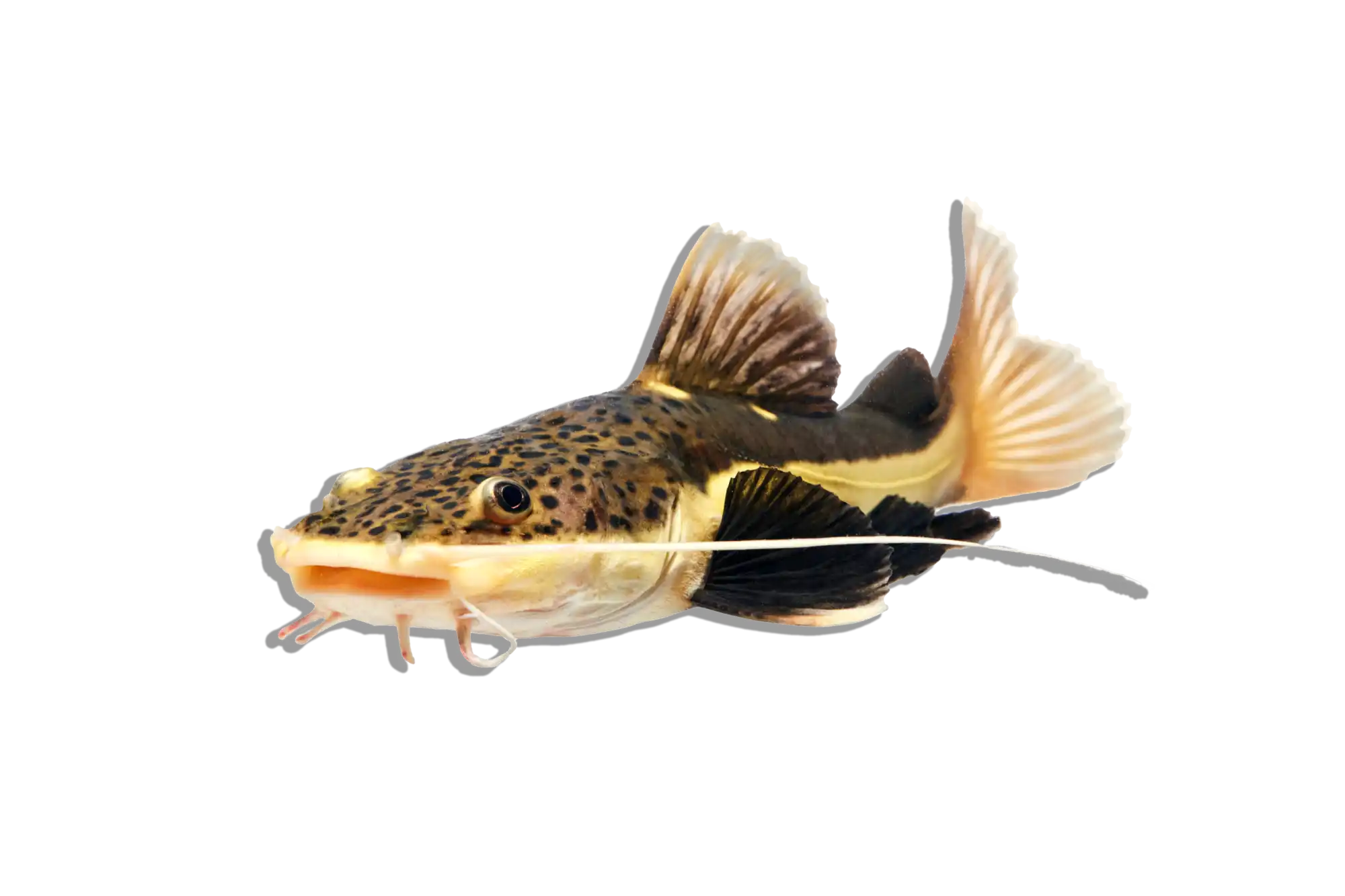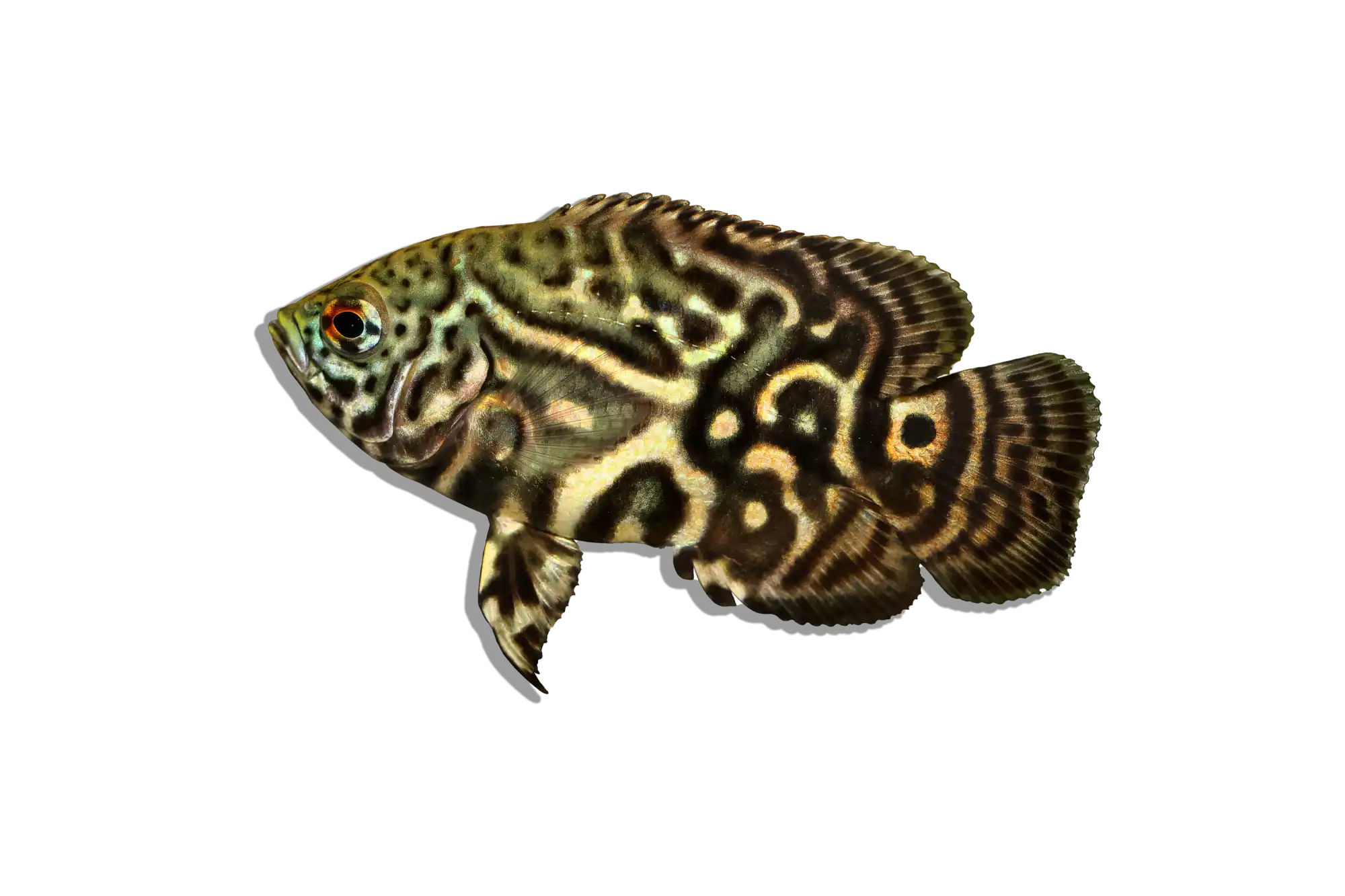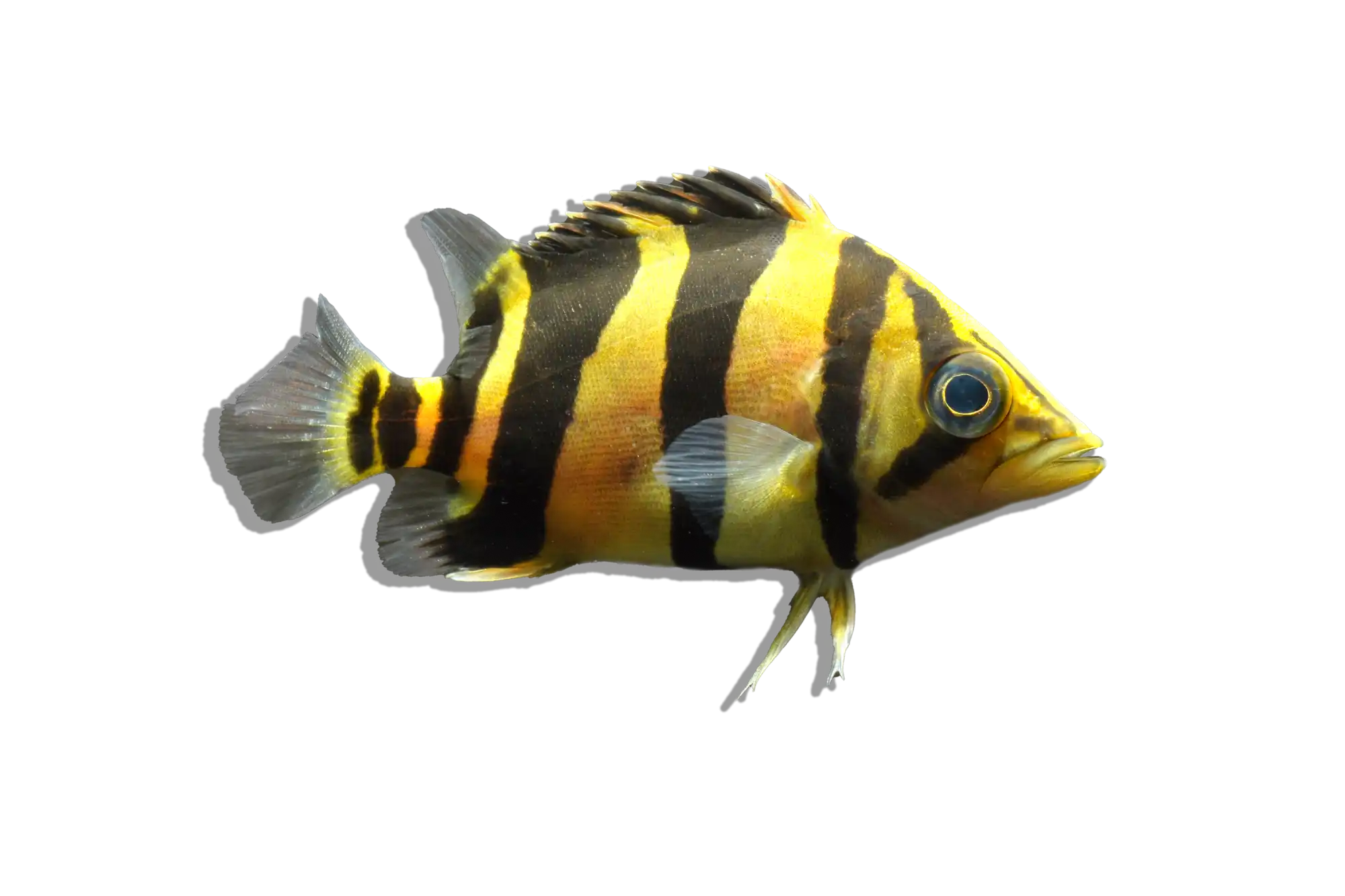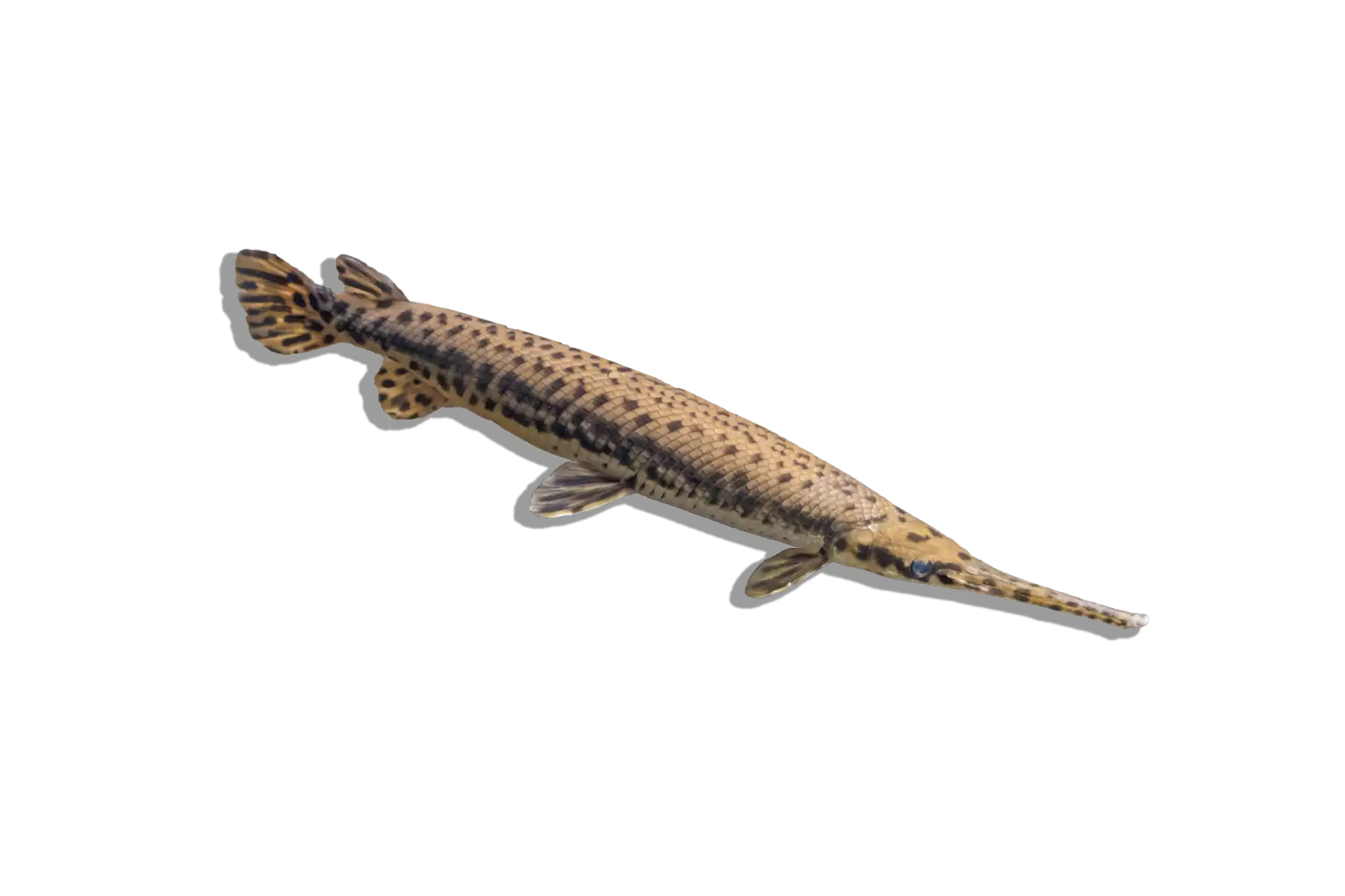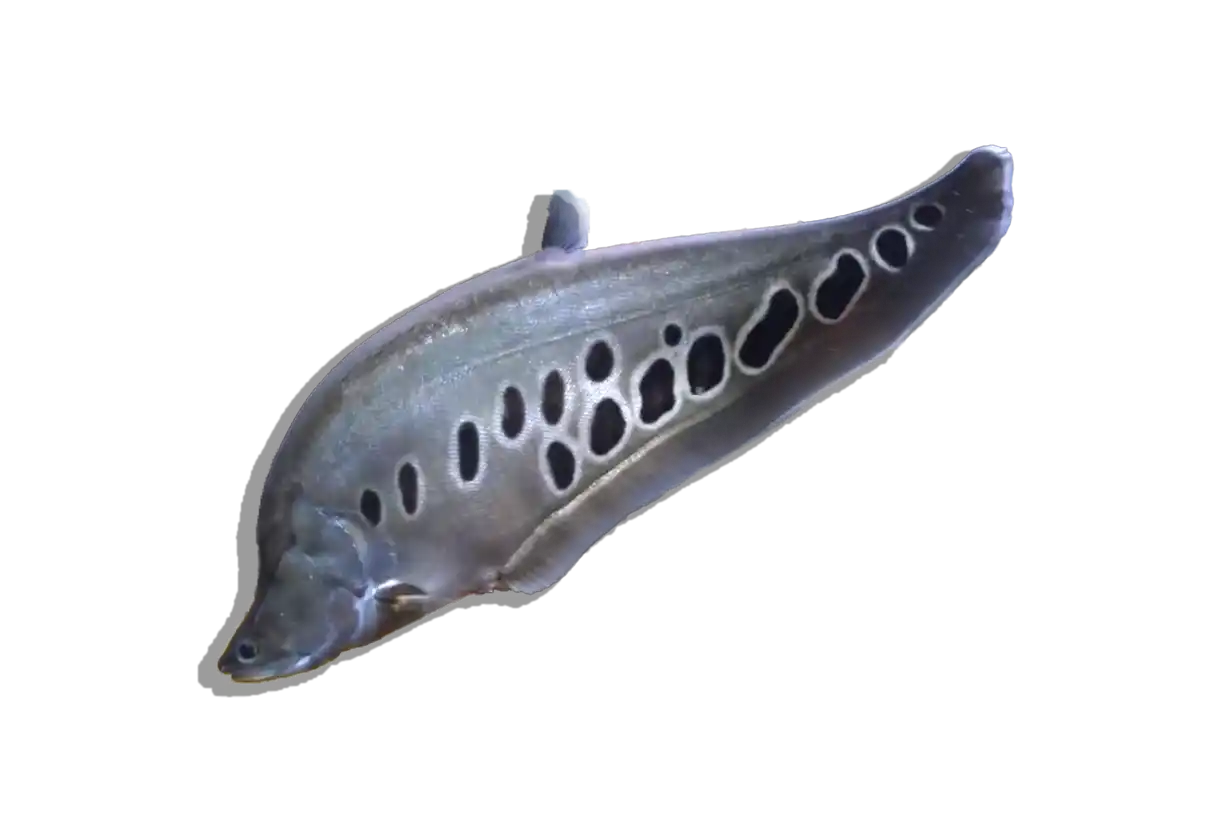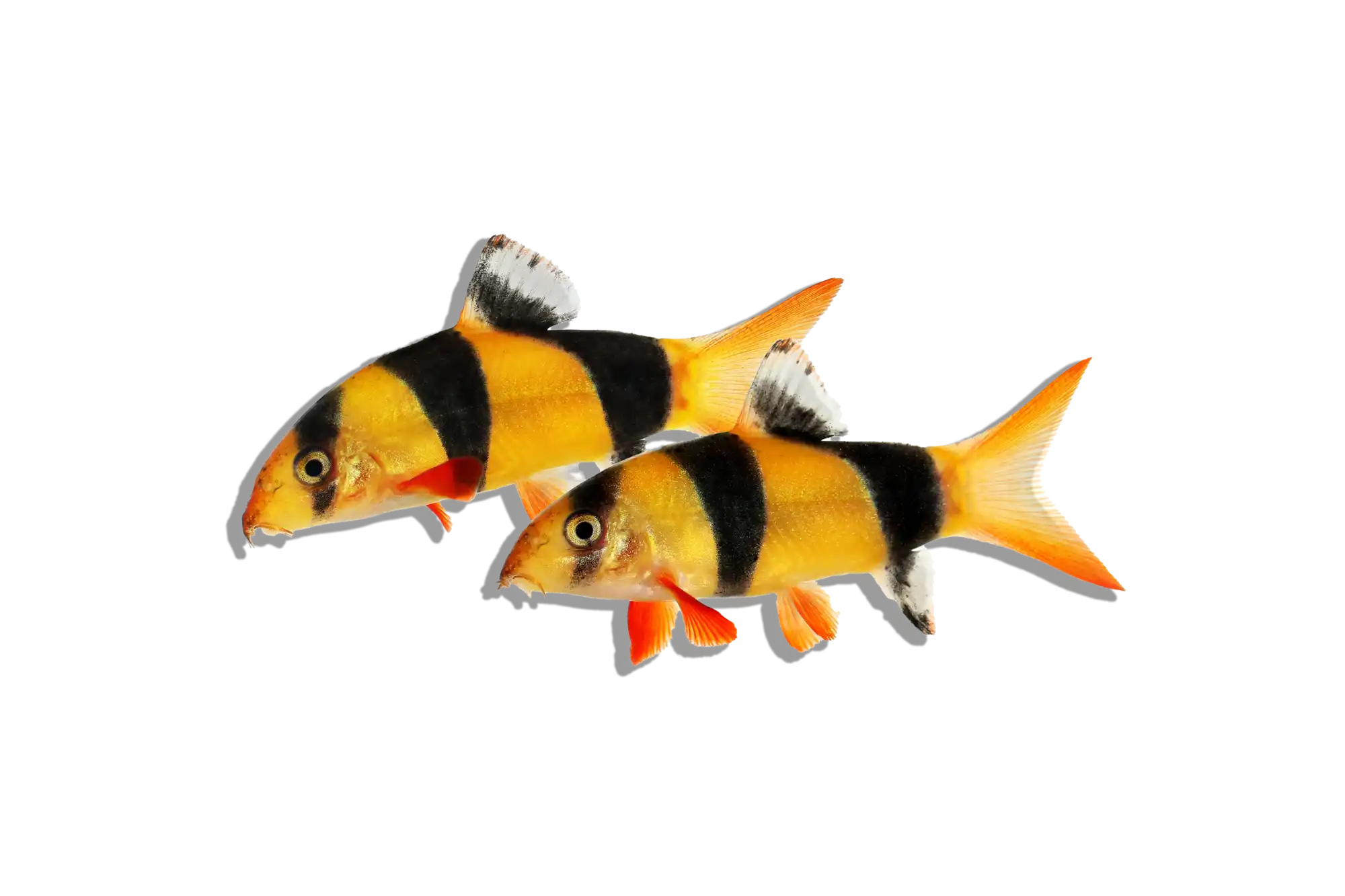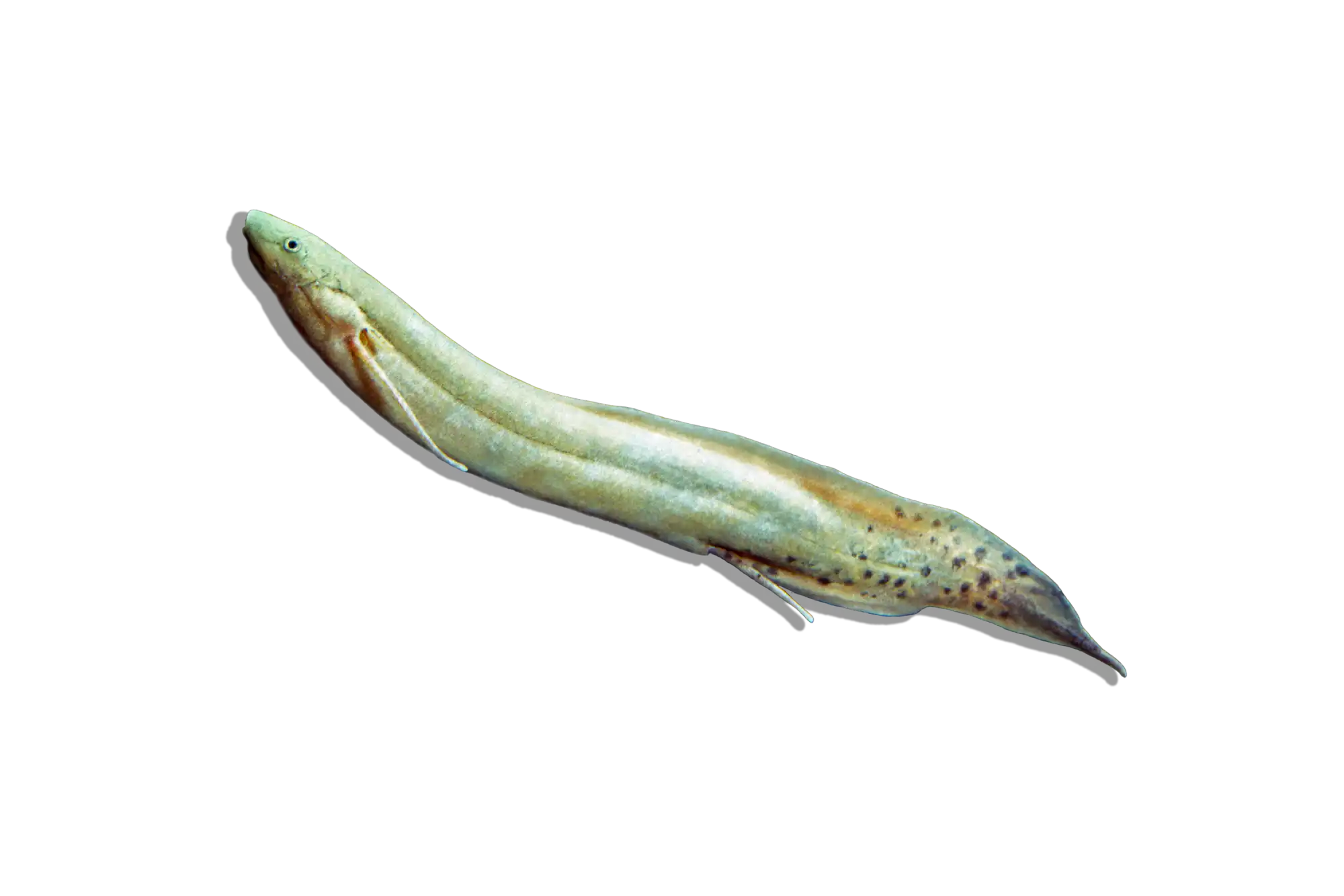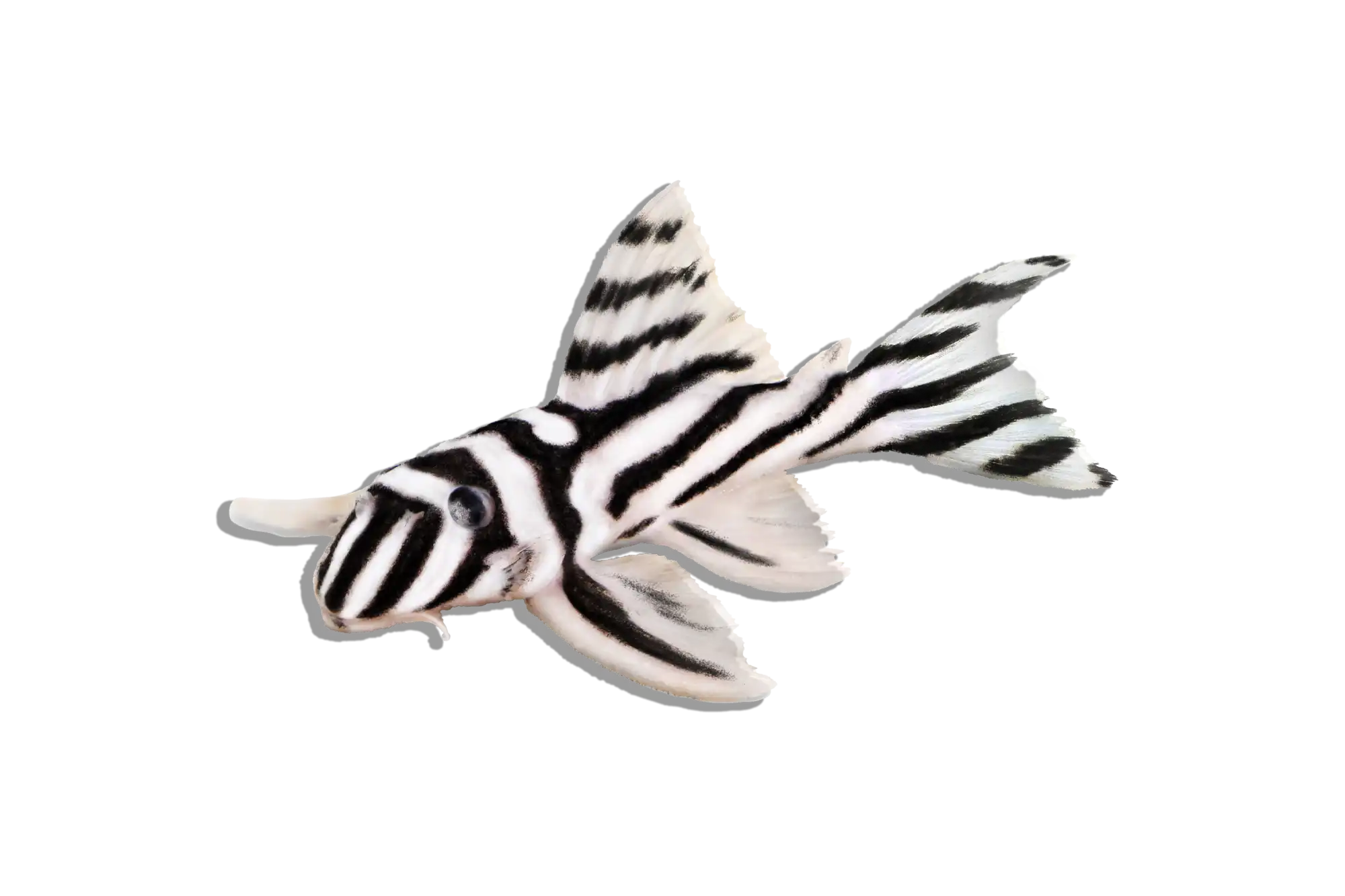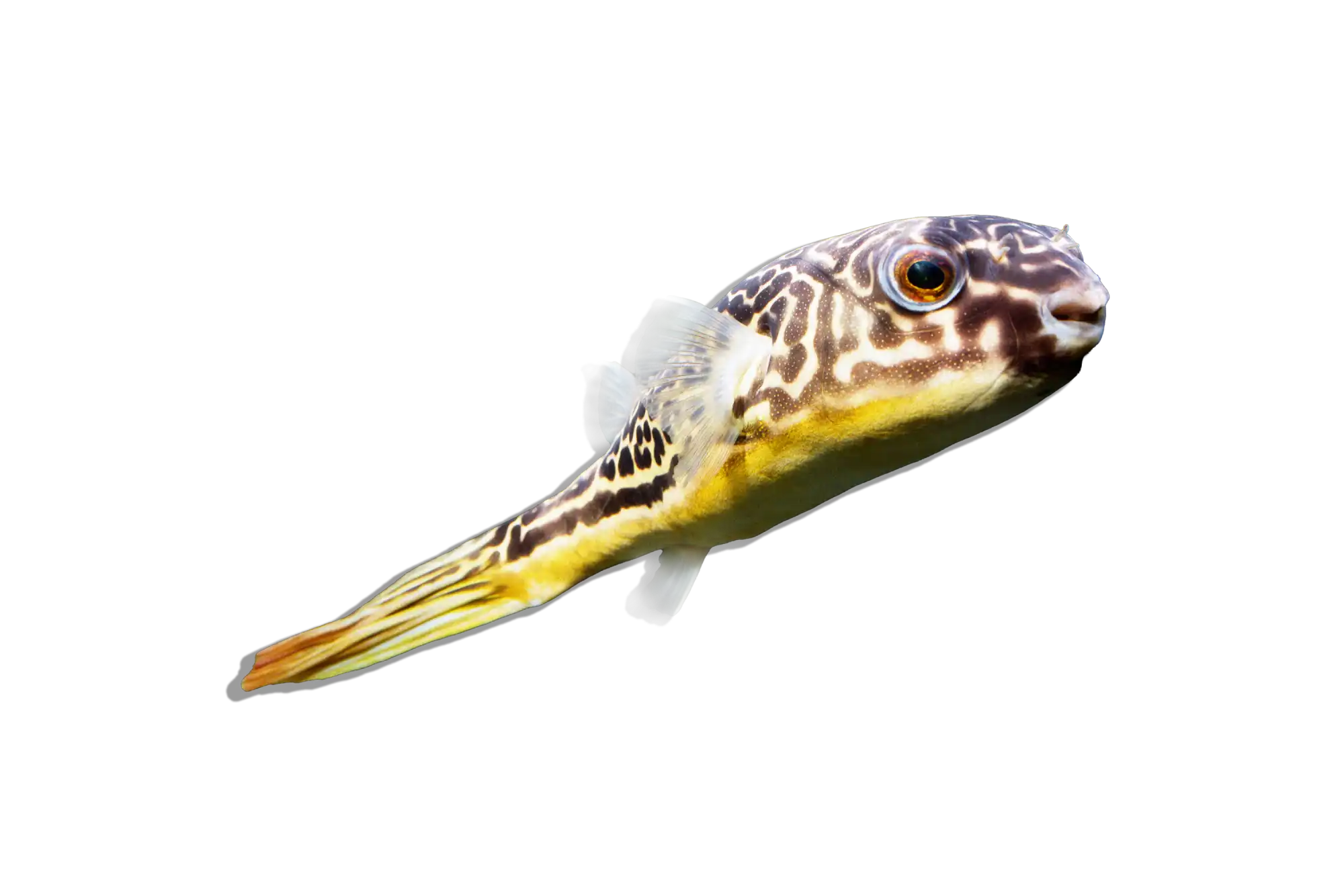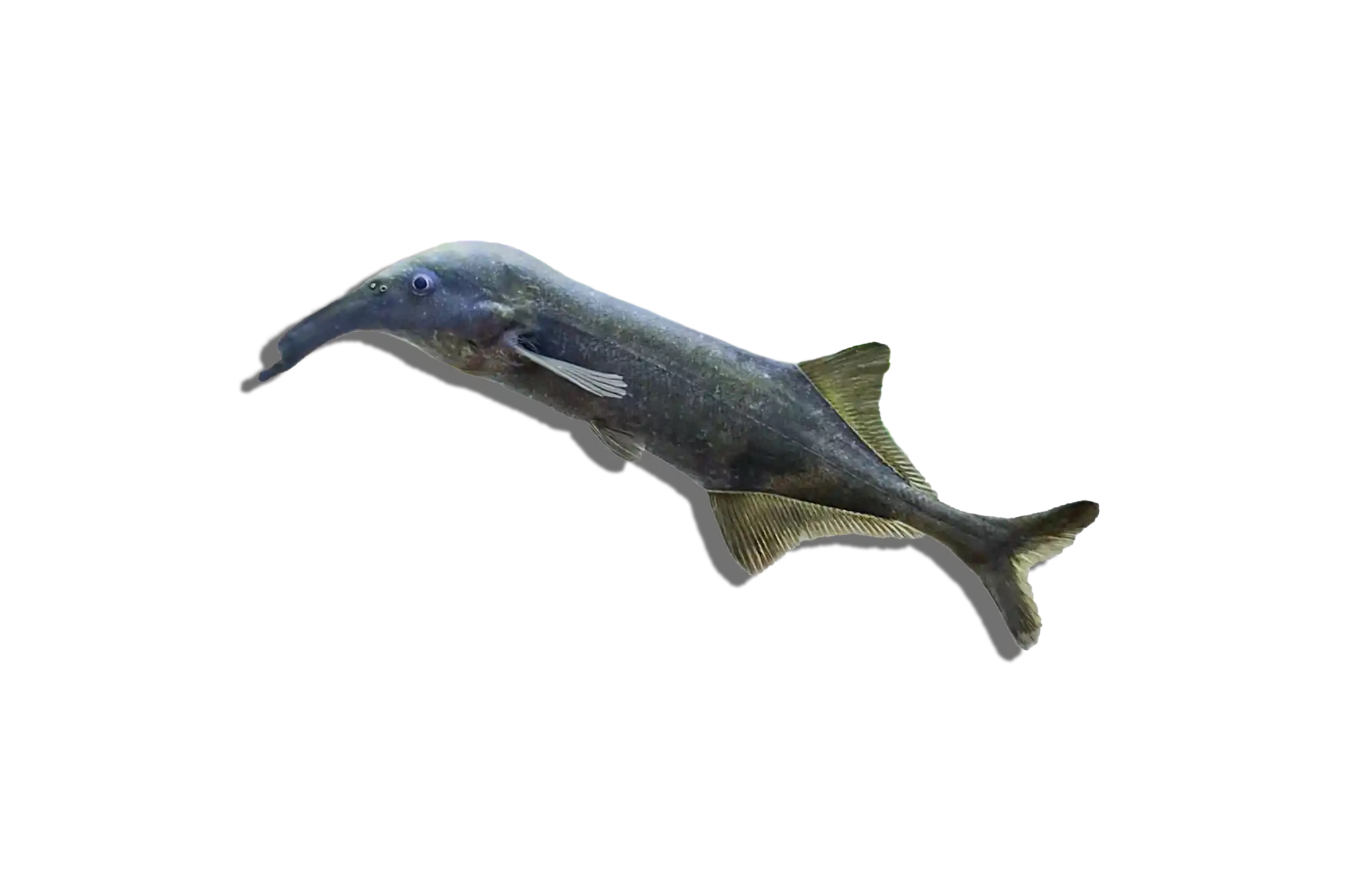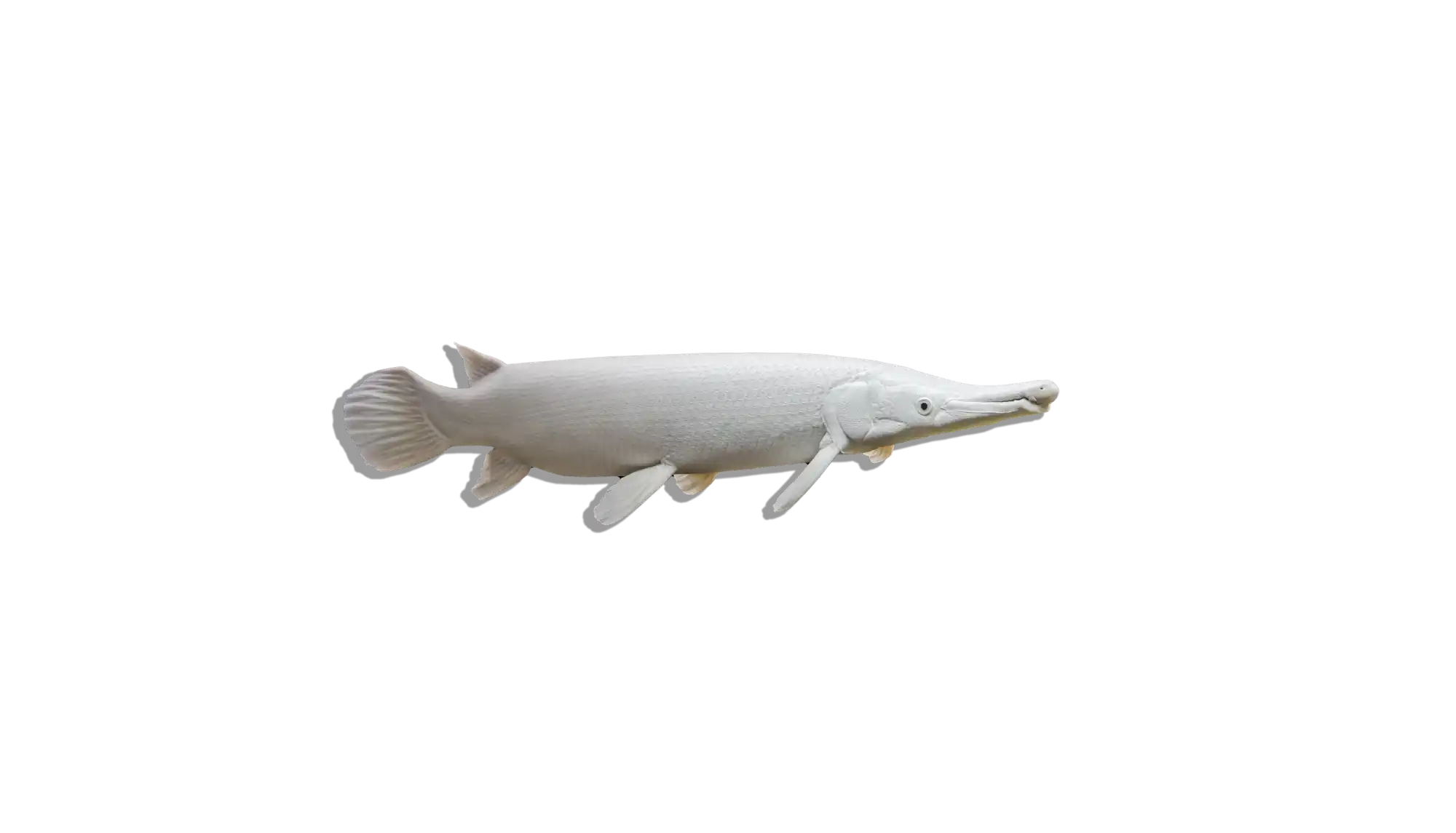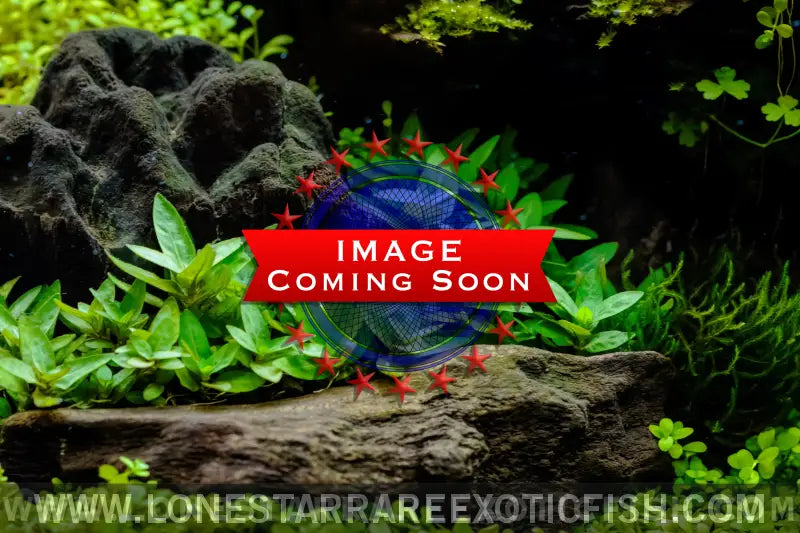Description
Common Name: Blunthead Cichlid
Scientific Name: Tropheus moorii ‘Izinga Island’
Other Names: Izinga Island Tropheus, Moorii Cichlid
The Blunthead Cichlid (Tropheus moorii ‘Izinga Island’) is a colorful and highly active species from Lake Tanganyika, best known for its territorial nature and social hierarchy. The Izinga Island variant showcases a unique blend of yellow, orange, and dark body coloration, making it a striking addition to African cichlid aquariums. Tropheus cichlids are highly social, requiring well-managed groups to thrive, and their diet must be carefully maintained to prevent digestive issues.
Habitat and Distribution: This cichlid is endemic to Lake Tanganyika in Africa, specifically around Izinga Island, where it inhabits rocky shorelines with strong currents. These fish are aufwuchs grazers, feeding on algae and microorganisms found on submerged rocks. They are adapted to highly oxygenated, alkaline water and are often found in groups foraging in shallow waters.
Size and Lifespan: The Blunthead Cichlid grows to about 4-5 inches (10-13 cm) in length. With proper care, they can live 8-12 years, but their lifespan is dependent on a stable tank environment, proper diet, and minimal aggression-related stress.
Diet and Behavior: Tropheus moorii are herbivorous and primarily consume algae, biofilm, and plant matter in the wild. In an aquarium, they require a strict herbivorous diet to prevent digestive issues such as bloat, which they are highly susceptible to. Their diet should include:
- High-quality spirulina-based pellets or flakes
- Fresh vegetables such as blanched spinach, zucchini, and seaweed
- Avoid protein-rich or meaty foods, as they can cause severe digestive problems
Tropheus cichlids are highly social but aggressive, forming strict dominance hierarchies within their groups. They are best kept in large colonies (10+ individuals) to spread aggression evenly and minimize stress. If kept in smaller groups, bullying can become excessive, leading to fatalities.
Breeding and Reproduction: The Blunthead Cichlid is a maternal mouthbrooder, meaning the female holds the fertilized eggs in her mouth for about 3-4 weeks until the fry are free-swimming. To encourage breeding:
- Maintain a stable group with at least one male and multiple females
- Provide rock structures and caves for territorial males to claim
- Keep water parameters stable to reduce stress and encourage natural behaviors
Once released, the fry can be fed finely crushed spirulina flakes or powdered algae-based foods to support healthy growth.
Aquarium Care and Tank Requirements: Due to their social and territorial nature, Tropheus moorii require a minimum of 75 gallons for a small group, while larger tanks (125+ gallons) are ideal for a stable colony. Their tank setup should include:
- Substrate: Fine sand or small gravel
- Decor: Large rock formations, caves, and ledges for territory division
- Filtration: Strong filtration and oxygenation to replicate Lake Tanganyika’s pristine conditions
- Water Movement: Moderate to strong current to mimic their natural habitat
- Lighting: Moderate to bright lighting encourages natural algae growth, which they will graze on
Ideal Tank Mates: Due to their aggressive and territorial nature, Blunthead Cichlids should be housed only with other Tanganyikan cichlids or similar rock-dwelling species. Suitable tank mates include:
- Other Tropheus species (if introduced together as juveniles)
- Petrochromis species (with caution, as they are also aggressive grazers)
- Julidochromis or Neolamprologus species
- Synodontis catfish for bottom-level cleanup
Avoid Mbuna cichlids or non-Tanganyikan species, as they have different dietary and aggression levels.
Difficulty Level: Advanced. Tropheus cichlids require a stable colony, strict herbivorous diet, and excellent water quality to thrive. They are not recommended for beginner aquarists due to their sensitivity to bloat and aggressive social dynamics.
Water Parameters:
- Temperature: 76-82°F (24-28°C)
- pH: 8.0-9.0 (strongly alkaline)
- General Hardness (GH): 10-20 dGH
- Carbonate Hardness (KH): 10-15 dKH
- Ammonia: 0 ppm
- Nitrite: 0 ppm
- Nitrate: <20 ppm (requires frequent water changes)
Additional Information:
- Tropheus moorii cichlids are best introduced as juveniles in a group, as adding new individuals to an established colony often leads to severe aggression.
- They require frequent small feedings throughout the day to prevent digestive issues.
- Fun fact: These fish graze on algae throughout the day in the wild, using their specialized teeth to scrape biofilm off rocks.
The Blue Zaire Moba Frontosa is a rewarding but challenging species that thrives in a stable colony, well-structured habitat, and a carefully managed diet. With proper care, they display vibrant colors and fascinating social behaviors, making them a centerpiece in a Lake Tanganyika aquarium.

